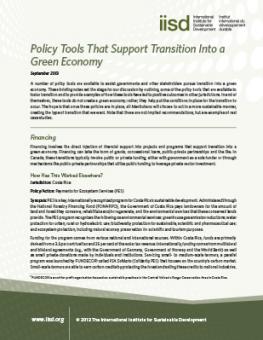
Policy Tools that Support Transition Into a Green Economy: Financing
A number of policy tools are available to assist governments and other stakeholders pursue the transition into a green economy.
This is one of four briefing notes used to set the stage for discussion for the TomorrowNow—Manitoba’s Green Plan consultations focused on the green economy. They outline some of the policy tools that are available to foster transition and provide examples of how these tools have led to positive outcomes in other jurisdictions. In and of themselves, these tools do not create a green economy; rather, they help put the conditions in place for the transition to occur. Note that these are not implied recommendations, but are examples of real case studies. This briefing note focuses on financing.
You might also be interested in
What the G7 Ministerial Could Have Delivered on Fossil Fuel Subsidies Reform
The G7 climate, energy, and environment ministers’ meeting in Turin fell short when it came to breaking the 15 years of gridlock on fossil fuel subsidies. Here are three ways the G7 can use their next meetings to demonstrate measurable progress.
IISD: EU’s historic Energy Charter Treaty vote will boost energy transition
The European Parliament has voted for the European Union to withdraw from the climate-threatening Energy Charter Treaty.
G20 Finance Ministerials and World Bank/IMF Spring Meetings: Expert comment
G20 finance ministerials and World Bank/IMF spring meetings will take place this week in Washington. High on the agenda is the need to mobilize trillions of dollars of investment in the transition to clean energy.
IISD Applauds Canada’s Reaffirmation to End Domestic Public Finance for Fossil Fuels in Budget 2024
Today's federal budget announcement delivers new measures to support affordability and reaffirms Canada’s commitments on climate action.